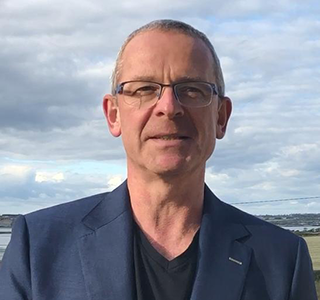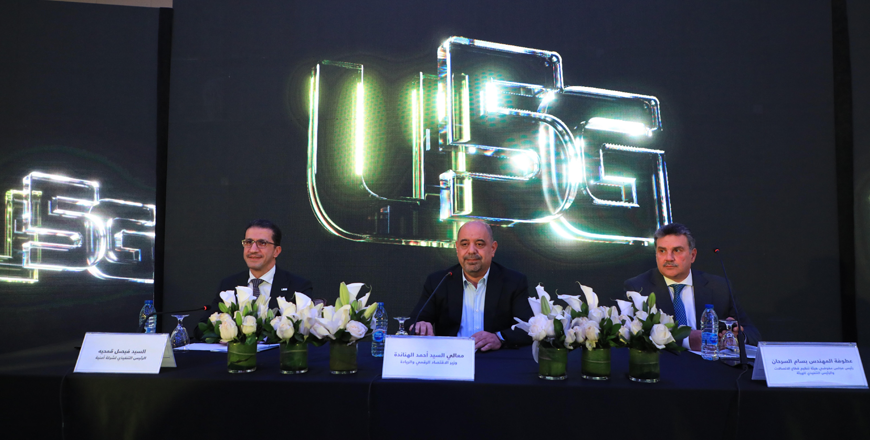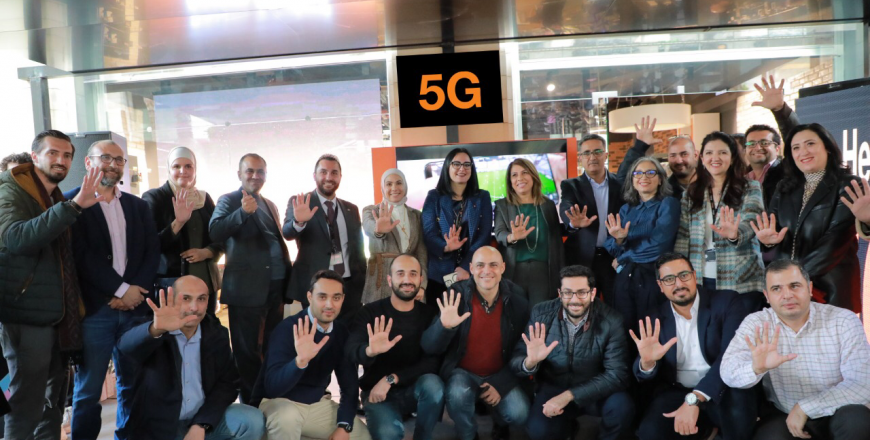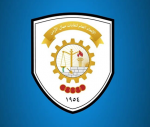You are here
Ericsson throws weight behind fostering innovations in cellular technology in Jordan
Nov 27,2022 - Last updated at Nov 28,2022

Kevin Murphy
1. Ericsson’s current focus areas and priorities in Jordan
As Jordan’s development ecosystem looks to foster the right environment for entrepreneurship, new business, and nationwide developments, we are committed to utilizing our capabilities, legacy, and expertise to enable the power of connectivity that will support the Jordan 2025 National Vision.
At Ericsson we strongly believe Information and Communications Technology (ICT) are the catalysts for digital transformation. Cellular networks are at the core of Jordan’s digitalization journey with the power to propel technological adoption. Being enablers of digital technology, networks like 4G and 5G have become crucial ingredients in Jordan’s competitiveness agenda. Therefore, fostering innovations in cellular technology, alongside increasing Jordan’s digital literacy and talent competencies will no doubt help bring the economically centered digital transformation visions for its public sector to fruition.
To enable fast and countrywide 5G coverage the CSPs need to use the low-band spectrum (spectrum below 1GHz). The mid-band spectrum (3.5GHz) is a great choice to provide improved quality to the end-user that will differentiate 5G from 4G. However, to ensure that end-users will get the benefits of 5G regardless of where they are located, we need to combine the mid-band spectrum with the low-band spectrum. This is particularly important for 5G Stand Alone deployments. Jordan has great potential to improve both 4G and 5G networks with the low-band spectrum as both 700MHz and 800MHz bands are still not utilized for mobile networks.
We are ready to support Jordan in achieving its vision and we were thrilled to highlight our intentions at the recent ICT Forum where we participated in keynote sessions and shared insights on the endless opportunities of 5G for the country. Our plan centers on using our technology as a driver of digital transformation with the ultimate goal of creating smart and greener cities.
2. Reflections on the Swedish delegation visit to Jordan
Part of a wider Swedish delegation, Ericsson’s MEA President Fadi Pharaon visited me in the Hashemite Kingdom of Jordan to meet with our partners, the communication services providers to discuss current and future collaborations. During our visit, we also examined the various opportunities that lie ahead for the development of advanced network capabilities. Our visit to Jordan reflects the deep-rooted and historic ties of friendship between the two countries. In fact, we had established our regional office in Jordan close to forty years ago which today counts 72 employees fully committed to the digitalization of the Kingdom. I myself have relocated to Jordan in 2021 to ensure total immersion in the opportunities presented for this burgeoning nation. I will be operating from Amman along with a couple of colleagues holding key regional leadership positions which will allow us to bring out the best of future connectivity to Jordan and the Levant. It is always an honor for us to meet with our partners on the ground and we look forward to future collaborations.
3. How can 5G benefit people?
5G is the most advanced and efficient mobile network we have at our disposal today and is essentially an advanced evolution of the existing communication standards of 2G, 3G, and 4G. With much faster speed than 4G, 5G’s ability to transmit data with extremely low latency is enabling critical communications in real-time - powering digital technologies that are driving digital transformation today.
5G features include faster connectivity speeds, ultra-low latency, and greater bandwidth which brought the technology much attention in recent years. It is now also seen as a critical tool in driving us towards a more connected and digital society. 5G holds massive potential in transforming the Jordanian society, its industries, and dramatically enhancing the day-to-day experiences of users across the board. In more concrete terms, 5G has the power to enable a multitude of services such as e-health, connected vehicles, and advanced mobile cloud gaming.
However, this comes with a caveat. In order to win the hearts of the next wave of 5G consumers, continued investment in network capacity and coverage, combined with innovative services and offerings will be required. Our largest global 5G consumer study ever done, the Ericsson ConsumerLab, was released last month and it is apparent that current and future 5G users expect innovative 5G experiences to be part of their mobile broadband plan. We also see that in the next wave of 5G consumers, when we are going beyond the early adopters, expectations on capacity and coverage will increase.
4. What are some of the most anticipated 5G applications?
With faster connectivity speeds, ultra-low latency, and greater bandwidth, 5G is dramatically enhancing day-to-day experiences. What we used to see as futuristic is turning into reality across industries. In the transportation industry, for example, the high-speed data transfer speeds, ultra-low latency, and increased reliability provided by 5G networks are enabling vehicles to seamlessly communicate with the cellular network, other vehicles, roadside infrastructure, and even pedestrians in real-time. It also holds a promise to strengthen the capabilities of self-driving vehicles and allow accident-free, stress-free, and emission-free driving.
The potential of 5G in the manufacturing industry today is already revolutionizing efficiency and safety. With low latency, high reliability, and high bandwidth, it allows for higher flexibility, lower cost, and shorter lead times for factory floor production reconfiguration, layout changes, and alterations. It also enables manufacturers to do remote quality inspections as well as identify and monitor items in real-time to guarantee they are delivered when and where they are needed. By also enabling predictive maintenance and industrial robotics to test hazardous materials, 5G also significantly contributes to preventing worker accidents and increasing safety in the manufacturing industry.
For organizations and telecom operators, this represents a wealth of opportunities to dip into artificial intelligence, augmented reality, and the internet of things. Spanning a variety of use cases across various industries, 5G is enabling the creation of a smarter, safer, and more sustainable future for all.
5. Can 5G deployment help achieve sustainability goals?
Apart from higher speeds and lower latency 5G technology will help to “Break the Energy Curve”. Every new mobile technology, every new “G”, provides better quality for end-users, higher speeds, and more capacity. However, so far, every new mobile technology also increased mobile network's energy consumption. Currently, the CSPs are spending in the range of 25B USD on energy consumption yearly. The further increase in energy consumption is simply not sustainable. We at Ericsson believe that with 5G we can break this trend and reduce energy consumption while increasing the quality, speed and network capacity. This is what we call “Breaking the Energy Curve” and it is possible as 5G is standardized with energy efficiency in mind allowing us to incorporate innovations in our HW and SW solutions to maximize energy efficiency and “Break the Energy Curve”.
According to the Ericsson Breaking the Energy Curve Report 2022, 5G has been deployed globally in more than 200 networks since the 2020 edition of the report. Certain steps are available to us to scale up 5G with sustainability top-of-mind and reduce the total network energy consumption by challenging the traditional industry approach: plan, deploy, and operate differently. Our report recommends taking a holistic view of network evolution, expansion and operation to break the upward trajectory of energy consumption of mobile networks. This approach will also help address the challenge of exponential data traffic growth.
Leveraging artificial intelligence/machine learning (AI/ML) and automation will maximize traffic performance of deployed hardware with minimized energy use. As radio access network (RAN) products and solutions consume the most energy across a mobile network, the report highlights the need for CSPs to continually prioritize RAN energy savings as new energy-efficient product generations are released. This is the best way to keep energy use under control while delivering excellent user experience.
We may not say it enough, but the ICT industry plays a decisive role in enabling the critical and exponential climate action demanded today by investors and regulators and has the potential to reduce total global industrial emissions by up to 15 percent. These demands are spurred on by intensifying pressures from consumers, customers and the wider supply chain. To meet these demands and align with the global 1.5°C ambition1 set by the Paris Agreement, businesses must adopt a full value-chain approach to setting climate targets according to a Net Zero timeline – with a commitment to halve total emissions by 2030 and reach a Net Zero state by 2050. To reach Net Zero, it is important to reduce energy consumption and break the curve.
Related Articles
Orange Jordan and Ericsson on Wednesday announced the launch of a JD15 million project to upgrade the telecom operator’s network, increase Internet speed and boost coverage across the Kingdom.
AMMAN — Umniah has announced the launch of its 5G services in the Kingdom during a press conference on Wednesday, making it the first
Orange Jordan launched the first 5G technology pilot in its Abdali Boulevard shop, offering visitors the opportunity to explore the most adv

















